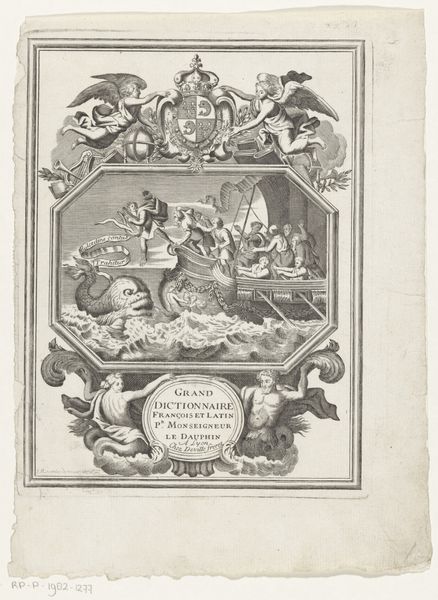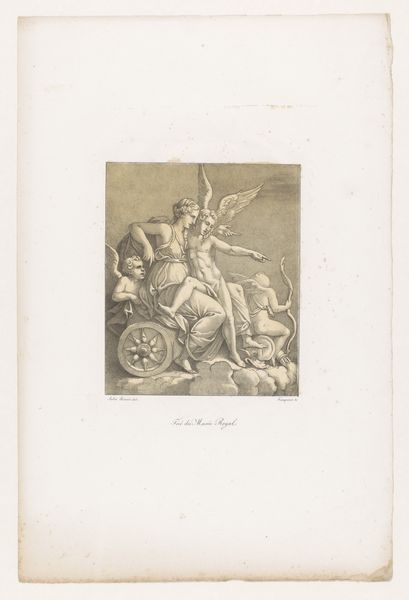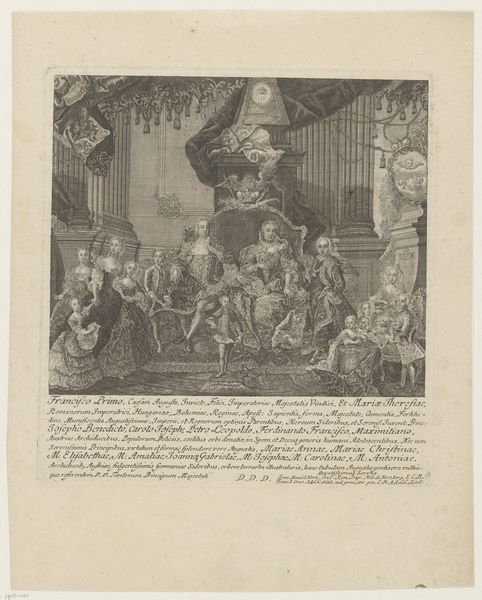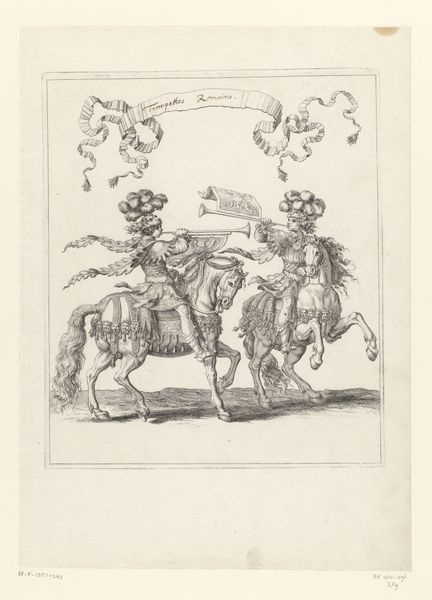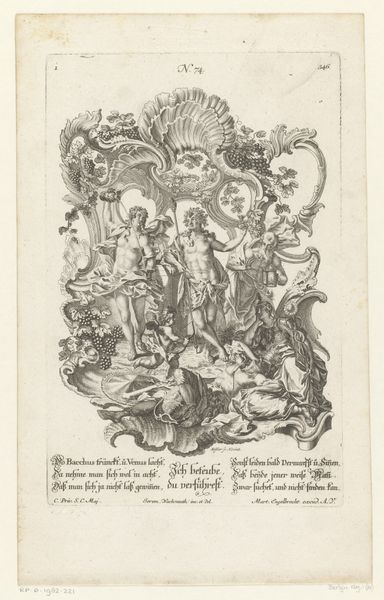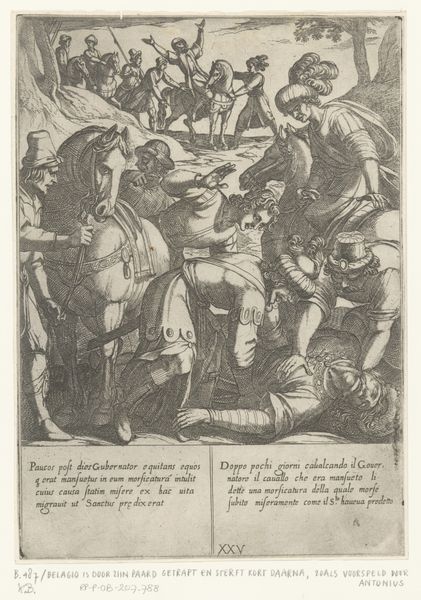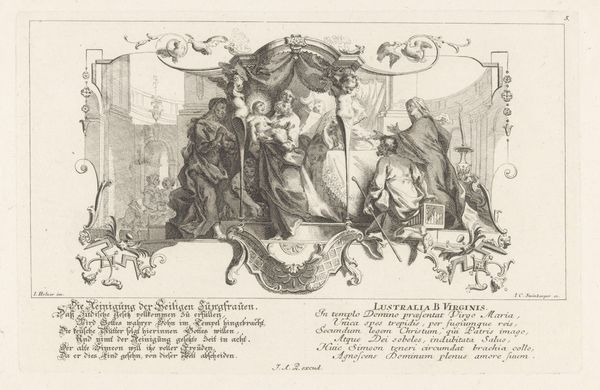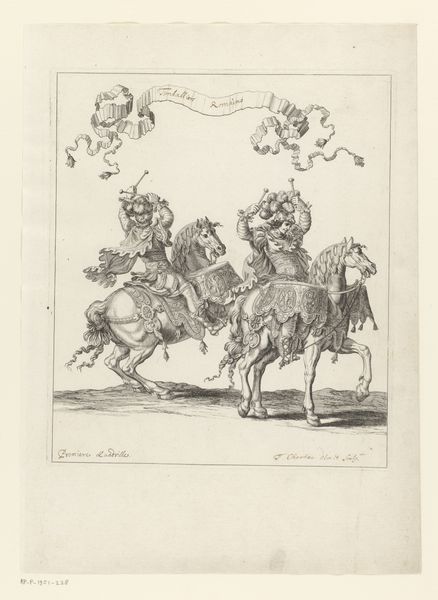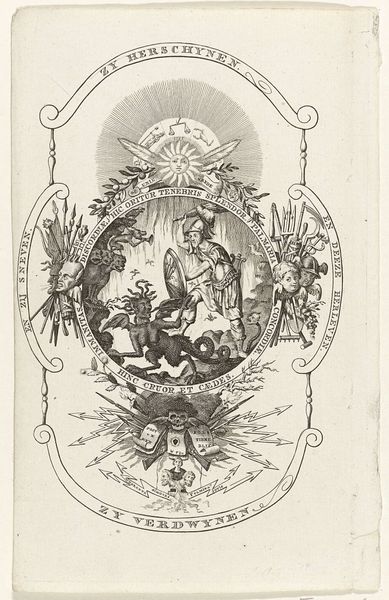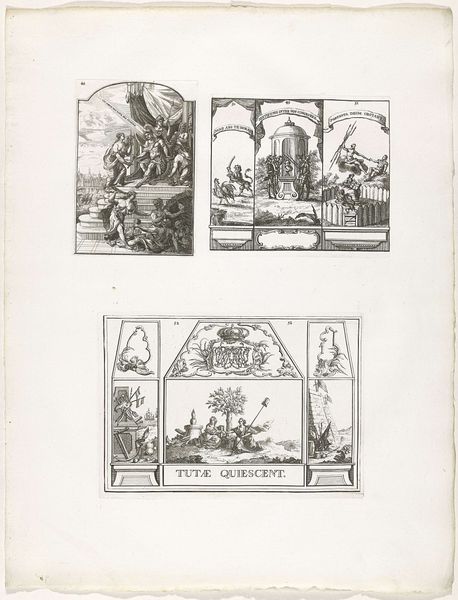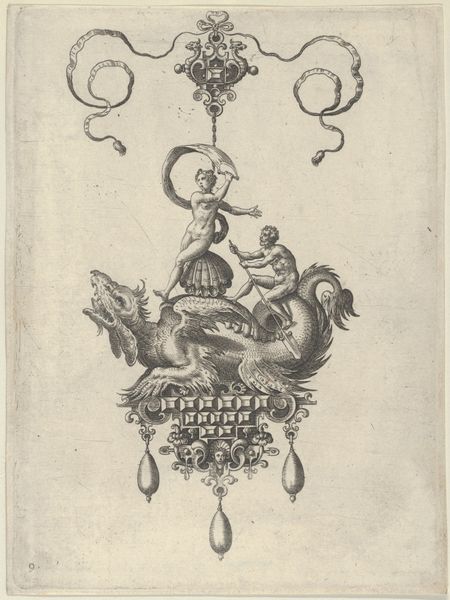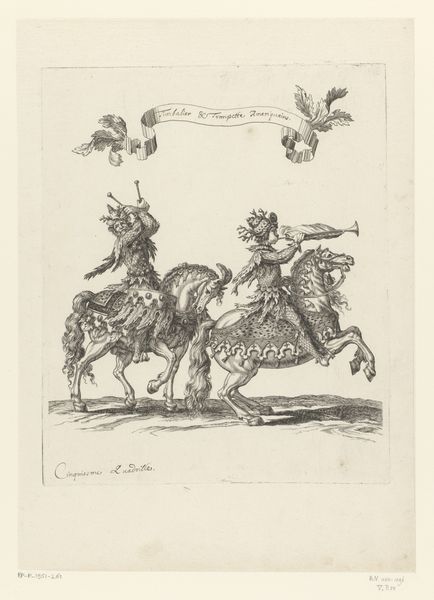
Vignet til T. de Hofmans "Kort Afhandling om Tiende" 1750
0:00
0:00
print, engraving
#
allegory
#
baroque
# print
#
pen-ink sketch
#
history-painting
#
engraving
Dimensions: 114 mm (height) x 134 mm (width) (plademaal)
Curator: Let's look at this Baroque engraving titled "Vignet til T. de Hofmans 'Kort Afhandling om Tiende'," created around 1750. What are your first impressions? Editor: My eye is drawn to the almost overwhelming density of forms. It's incredibly intricate and a bit chaotic. There's a tension between the sharp detail of the engraved lines and the overall lack of visual breathing room. Curator: Indeed. It's fascinating to consider the engraving process itself. The artist meticulously cut lines into a metal plate, then used ink to transfer the image. Look at the texture that it creates. The original purpose was to act as a vignette in T. de Hofman's "Kort Afhandling om Tiende" and, as a print, would have been more widely accessible to a burgeoning reading public than, say, an oil painting. Editor: Focusing on its formal structure, I see an interplay between classical statuary on the left and allegorical figures entangled in ornamental foliage, which creates this sense of dynamic instability. What do you think the composition suggests about the function it may have been created for? Curator: Considering the "Tiende" refers to tithing, a form of tax, it's not hard to surmise. Notice the objects within the vignette. There are books, inkwells, scrolls… they evoke knowledge and administration, elements inextricably tied to governance, especially fiscal management in the 18th century. And then the armorial shield right at the top would have functioned as the author's seal. Editor: So, the form is intricately interwoven with its social context. It isn't just a pretty picture, but a crafted object reflecting and participating in the world of economics, governance, and even the labor of printing. It almost romanticizes that administration! Curator: Absolutely. It’s an artifact steeped in the political and material conditions of its production. It speaks volumes about how images, even seemingly decorative ones like vignettes, were integral to the structures of power and systems of knowledge distribution. Editor: Seeing it in this light helps make sense of what initially felt chaotic. Now I perceive how the individual elements come together in that formal way, in this particular print, with that purpose. Thank you.
Comments
No comments
Be the first to comment and join the conversation on the ultimate creative platform.

